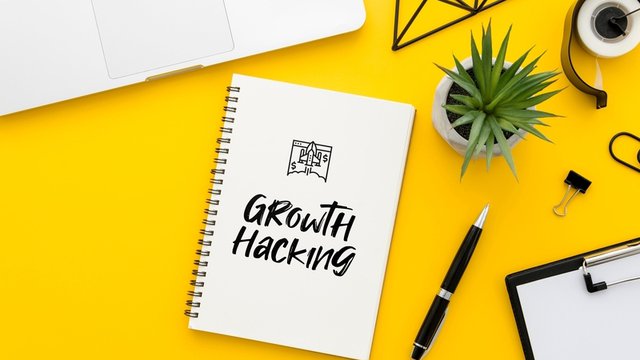
Growth hacking: what is it and how can it be applied?
Edited on Aug. 28, 2025

Creating a profitable brand, scaling quickly, or reaching the right customer no longer depends solely on large budgets.
Today, data, creativity, and automation open up new opportunities to move forward without overspending. In this context, growth hacking has emerged as a method that has revolutionised the way businesses are driven forward.
In this post, we take a look at what growth hacking is, how to apply it, and what strategies and tools help accelerate results. If you are interested in growing your company from a data-driven perspective, you will find this article very useful. In fact, growth hacking is one of the core topics in degrees such as the Bachelor's Degree in Business Analytics at Universidad Europea.
What is growth hacking?
Growth hacking is a methodology that combines digital marketing, programming, data analysis, and automation to grow a product or service quickly, often with limited resources. The term growth hacking was popularised by Sean Ellis in 2010 while helping startups expand without the need for large investments.
The core principle behind what growth hacking is lies in rapid experimentation: test quickly, measure everything, and keep only what works. It relies on technological tools to act almost in real time and is especially powerful in the early stages of a project—when the priority is identifying which tactics generate the most attraction and conversions.
A growth hacker connects data, product, and channels to optimise every stage of the conversion funnel, from brand discovery to becoming a loyal customer.
Understanding what growth hacking is through the AARRR funnel
One of the best ways to understand what growth hacking is involves looking at the AARRR funnel, developed by Dave McClure. It breaks growth into five stages:
- Acquisition – Attract qualified users at the lowest cost.
- Activation – Help users quickly understand the value of the product.
- Retention – Keep users engaged and coming back.
- Revenue – Turn users into paying customers.
- Referral – Encourage users to recommend your product or service.
Acquisition: attracting the right users
A key part of understanding what is growth hacking is realising it often uses unconventional, low-cost channels to acquire users. These can include niche content SEO targeting long-tail keywords with high intent, lead magnets distributed through platforms like Reddit or specialist forums, and ethical scraping to find and target active prospects for highly personalised campaigns.
Activation: reaching the “aha moment”
In growth hacking, activation is about reducing friction so users experience the product’s value quickly. Techniques include progressive onboarding tailored to different user profiles, as seen in Notion, or early gamification that rewards users instantly, as Duolingo does.
Retention: keeping users engaged
Retention is central to what growth hacking is, as keeping customers is more cost-effective than acquiring new ones. Growth hackers use automated, behaviour-based email campaigns, advanced segmentation for personalised content recommendations, and push notifications to keep users active—much like Headspace does to maintain daily engagement.
Revenue: monetising growth
A growth hacker seeks to increase revenue without harming the user experience. Common tactics include freemium models with strategic limits (like Loom’s video cap), well-timed upselling prompts (as Canva does when accessing premium assets), and A/B testing of prices and feature bundles to find the most profitable setup.
Referral: turning users into promoters
Another way to understand what is growth hacking is to look at how it transforms satisfied users into active promoters. Incentivised referral programmes, like Dropbox’s legendary offer of free storage, can drive exponential growth. Native social sharing options, such as Spotify’s integration with Instagram Stories, and user-generated content campaigns also encourage organic promotion.
Tools that support growth hacking
To put what growth hacking is into practice, a variety of tools can support each funnel stage. For acquisition, SEO platforms like Ahrefs, Semrush, and Ubersuggest help identify keyword opportunities, while tools like Phantombuster can automate social prospecting.
For activation, services such as Hotjar and Microsoft Clarity provide heatmaps and session recordings, and onboarding platforms like Userpilot and Appcues help guide users interactively.
Retention efforts can be boosted with email automation tools like Customer.io or Mailchimp, messaging platforms like Intercom or Zendesk, and push notification services like OneSignal.
For revenue, payment and subscription solutions such as Stripe or Paddle, alongside optimisation tools like Google Optimize, are common choices.
And for referral campaigns, services like ReferralCandy, Viral Loops, and Canva can help build and promote shareable, growth-driven campaigns.
What you should remember about what growth hacking is
- Growth hacking is about achieving rapid, sustainable growth—often with minimal budgets.
- It uses data, automation, and experimentation to improve every stage of the AARRR funnel.
- Originally created for startups, it now benefits established companies seeking acceleration.
- Strategies must align with the product, audience, and stage of business—always backed by measurable results.
- The right tools can automate processes, identify bottlenecks, and scale results effectively.
If you want to turn knowledge of what growth hacking is into a career, investing in your education is key. Universidad Europea offers numerous degrees in business and technology that can launch your career in the field, such as the Degree in Economics and the Degree in Business Administration, both designed to equip you with the analytical, strategic, and innovation skills that drive growth in today’s competitive landscape.
Article published on Sept. 1, 2021